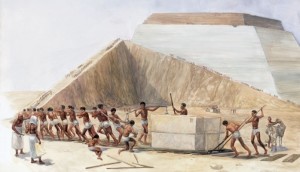How Vendor Management Works
Randy Banna
Latest posts by Randy Banna (see all)
- Take an Interview Like a Champ - June 6, 2015
- Be a Shooting Star… - June 6, 2015
- How Vendor Management Works - June 6, 2015
- Success Through Social Intelligence - June 6, 2015
- On Aspirations and How I Failed my First Interview - June 6, 2015
I would like to begin the article by apologizing for tailoring the topic to suit predominantly Oil and Gas folks yet I hope for those who do not find the material too dry that they find it useful.
Vendor management is a demanding activity we all come across in the Oil and Gas industry through one period of our work life, it requires mutual understanding, discipline, organization, unified goals and a commitment that can last for more than 3 years to deliver the final result.
In this article, I will do my best to summarise in a bullet format the knowledge and experience I gained from managing subsea equipment vendors over the last few years. It is worth saying that some of these tips can be simplified and applied on pretty much any activity that you work on, be that in a technical or non technical discipline.
1. Set the specifications
Specifications can be divided into two portions, the first covers the physical aspects which are the 3 main parameters that need to be identified (pressure class, temperature class and material class), once these requirements are detailed for the field under question, vendors can be approached for information and eventually a quotation can be requested. Second, documentation requirements need to identified which should cover (quality control plans, manufacturing specifications, testing specifications, delivery schedule, functional design specification, design calculations and equipment drawings)
2. Prepare a contractual agreement
Once a vendor is selected, a detailed contractual agreement shall be set up. This agreement covers the legally binding liabilities between the buyer and the seller. In more details the contract should cover the expiry date, country requirements, the range of services or equipment to be supplied and the equivalent pricing, the payment terms, any penalties that will be applicable in cases of delay or defects as well as the termination conditions.
3. Prepare a purchase order
Once the legal framework has been agreed upon, the responsible package engineer prepares a purchase request or purchase order detailing the equipment or service with their part or model numbers, quantity required and the date by when the equipment is required.
4. Hold a kick off meeting
As soon as the purchase request/order is approved and processed by the vendor, the responsible engineer shall hold a kick off meeting to introduce the teams (project team and vendor team) and discuss any risks that may hinder the delivery of the equipment and develop a mitigation plan for any potential issues. The most crucial point of discussion during the kick off meeting is the final agreement on the order oflong lead* items which is a critical step to control the project’s critical path.
* Long lead items are the components of a piece of equipment that require the longest duration to get delivered due to its complexity or to the supplier being busy with other orders placed in advance.
5. Set up your document control
The responsible engineer shall set up the document control departments on both sides (project team and vendor team) in order to ensure the circulation of documents is under control and that the responsible project and engineering managers get the documents once they are released in an orderly fashion. Swift document control processes certainly affect the final delivery and in return the efficiency of the project delivery.
6. Set up your Third Party Inspectors
To implement the approved quality control plan, the project will require third party inspectors. The professional background of inspectors is very important and it is critical to hire the suitable inspectors and familiarise them with the project and ordered items in order to ensure the delivery of problem free equipment.
7. Hold a regular schedule follow up
The responsible engineer has to hold a regular follow up conference call or visit to remain on top of the delivery schedule preventing it from slipping to the right. The magic word is biweekly.
8. Visit vendor regularly
It is very effective to visit the vendor once monthly to spend half a day walking around the plant and have the follow up meeting on site. It develops a stronger bond between the project team and vendor team and it keeps an eye on the project equipment and certainly conveys the message that the project team is keen on getting things done.
9. How to deal with Non Conformance
Those will happen on every project; there are broadly two types of non conformances, those causing a short and those causing a long delay. In both cases it is better to involved an engineering technical authority and the project manager, if a long delay will be caused (more than 2 weeks), the client has to be involved directly to be aware of potential impact on the project delivery. In conclusion, the responsible engineer is responsible to formulate a response to the NCR and follow up to ensure it is closed out.
10. How to manage change
Simple, change has to be captured in the system, it has to be discussed with the relevant approving authorities on the project, and once approved, the change request has to be documented and stored in the project document control folder. It is critical to understand that changes at the beginning of a project are cheaper than later in the project, so a sensibility check has to be made to evaluate whether a change is necessary or not in the first place.
A few more tips:
. Learn to prioritize: especially if the engineer is managing many vendors, organizing a prioritized to do list is crucial in order to handle the most important matters first.
. Be socially intelligent: it is OK to accept an invitation over lunch by a vendor every now and then, same goes for gifts but the engineer needs to ensure it is within reasonable boundaries and within the acceptable company policy.
. Gain the vendor team’s trust: it is good to remember that both sides are seeking success so it mutual trust is one of the most important factors that will ensure safe equipment delivery. Pointing fingers and pressuring can work but will almost certainly develop bitter relationships that may affect future potential cooperation.
. Work as a one big team: organizing a team building event between the two teams is a great way to develop the work relationship and establish bridges of understanding, once every quarter is a common habit in the Oil and Gas industry.
With these tips, I can conclude the article and I hope you find it useful, please feel free to contact me if you have a specific condition you would like to discuss further, I would be more than happy to help you out.
Respect earns you respect




 />
/>



